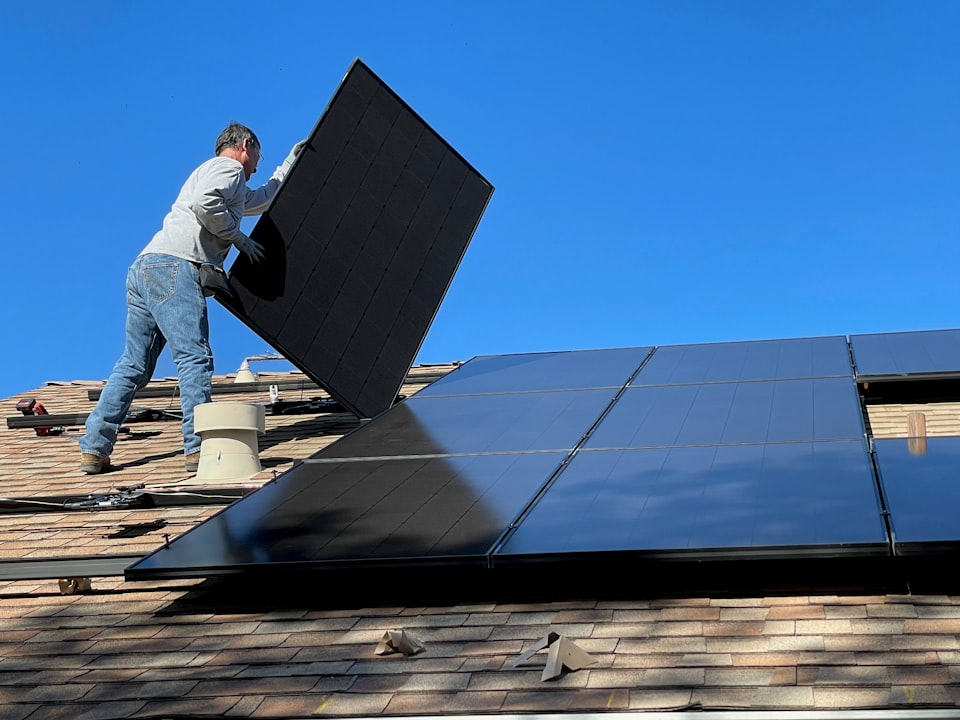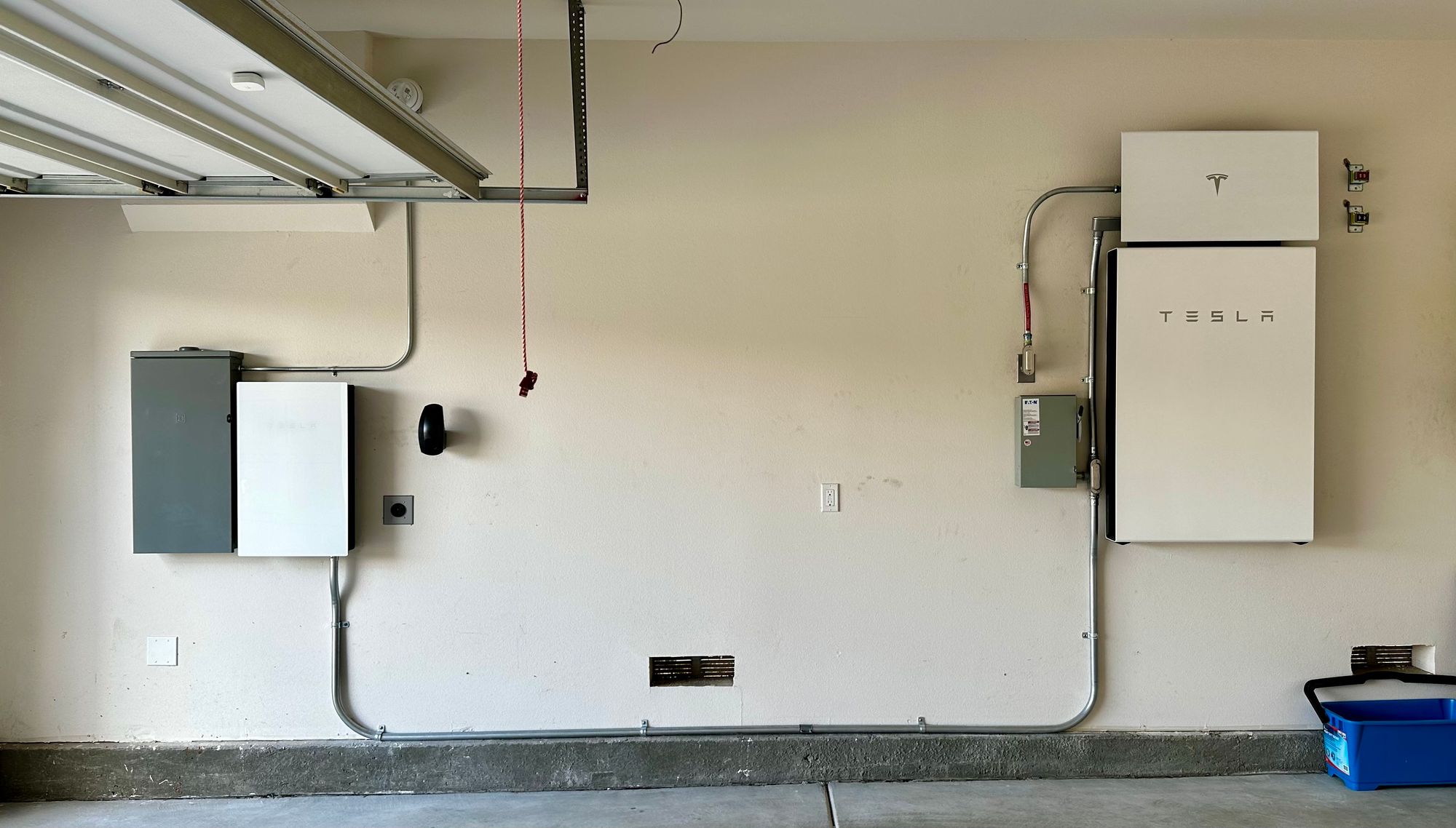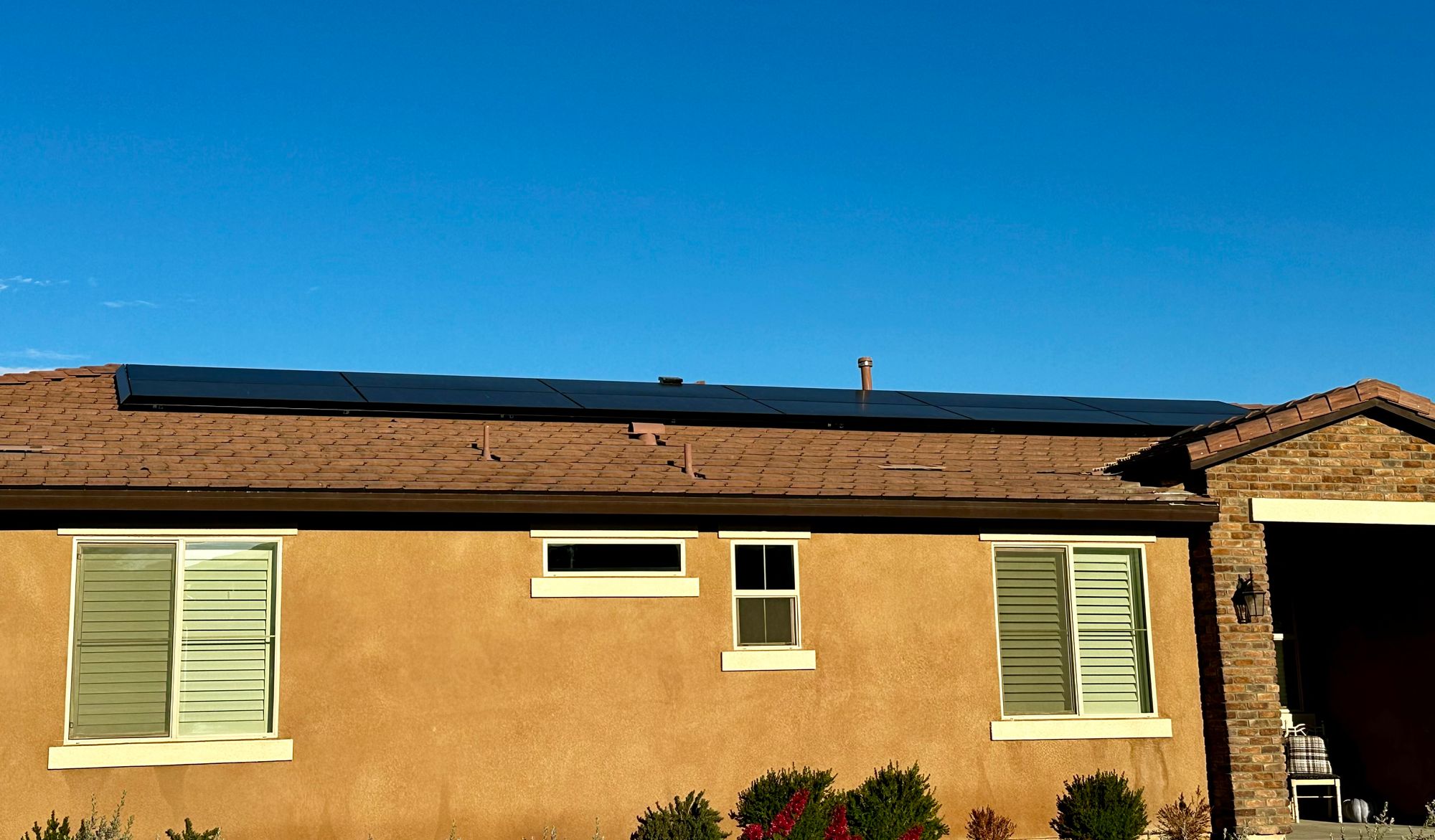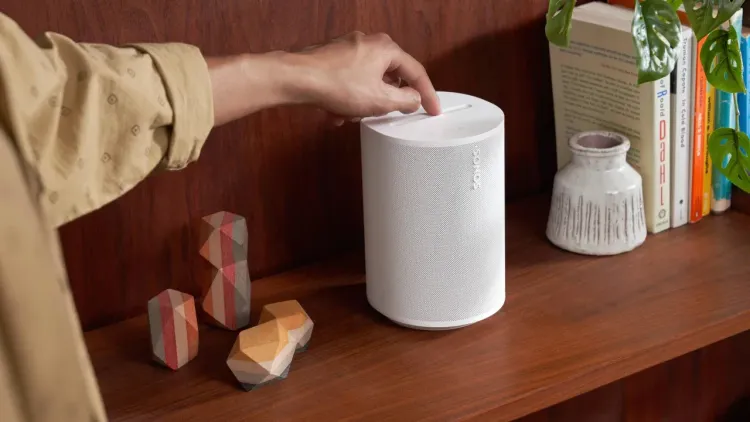Tesla Solar Experience

During the pandemic, we purchased a new home in the Coachella Valley in California better known to most as just Palm Springs. A desert oasis filled with lush golf courses dotting a desert landscape provides a great place for solar power. So much so that houses that were completed just after ours are mandated to have solar installed on them as part of the build.
Ours did not have solar installation added to the plans but it was built with that in mind. The conduit was run from the roof to the panel to make it easy for this interconnection. So November of 2021 we submitted an order for a 5.1kW solar installation and 1 Powerwall. As part of the order, we put $100 down and agreed to a loan payment term.
This is the nearly year-long process we embarked on and things we discovered along the way that hopefully will make things less painful for someone else.
Project Management
Most of the duration of the nearly year-long process to get our installation completed was in this phase. There are a decent number of steps to complete, many of which must be completed before installation. These include:
- Home Assessment
- System Design
- Approval to Install
- Home Owners Association Approval (If needed)
- Permit
- Installation
- City or County Inspection
- Final Payment
- Approval to Power On
- Power On
Home assessment and system design moved along pretty quickly, and during this phase, we did some calculations and wanted to be able to cover our usage even in the hot months when the air conditioning is running much of the day and night. We reached out to our project advisor and requested the size of the system be bumped up from the original 5.1 kW system to a 9.6 kW system but still maintaining the original 1 Powerwall.
We worked with our HOA with the provided system design documents and got approval quickly and easily from them so we were onto permitting and approval to install which is purely on your utility. I was warned by our project advisor that our utility Imperial Irrigation District (IID) was notoriously slow in responding to these projects. So slow in fact that Tesla discontinued taking orders from customers of this utility after we placed our order. Our order was submitted to IID in February and this is more or less where it stayed until November.
In the months between I was able to get email contacts from both Tesla and IID and was doing a monthly check-in to help drive the project as without this I was getting no updates. I feel like this helped keep people on task and ensure communication was happening effectively. There were a few miscues between Tesla's team(s) and IID that were resolved in these conversations.
We got the permit and the approval to install within about two weeks of each other in early November and we were put on the schedule for installation.
Material Delivery
In some of the notes on the website, there is an indication that "materials" will arrive 1-3 days before installation day. It wasn't clear to me if that meant they were going to be delivered to the installers who are contractors or to our home.
It turns out they do deliver to the home and the day before the installation a flatbed truck arrived with two pallets of materials for the installation. This includes the Powerwall, panels, electrical boxes, and other materials the install team will use. The pallets were able to be put in our garage for keeping overnight but just barely given the size of the forklift that came with the truck.
Installation
Installation in my mind was going to be pretty straightforward. The home was engineered with the idea that solar would be installed and as such empty conduits were run between the roof and electrical panel to make this connection easy. Tesla supplies an ariel view of the panel installation which shows where they would be installed so I felt confident in how the installation would go.
The installation teams were split into two groups that arrived at different times. the early arrivers were the team that would be responsible for most of the electrical work. Mounting of the new breaker box, the inverter, the Powerwall, and all the wiring and conduits necessary for that equipment. This team worked most of the morning and into the afternoon without a hitch. The only strange issue that came up with this team was that the Powerwall which you can see pictured right had to be installed a minimum of 3 feet off the floor. This is a little surprising as all marketing materials and other installs I have seen have them near or on the floor. I was told this is a building or fire code.

The second team to arrive was responsible for the solar panel installation and work on the roof. After they checked in with the team that was already on site they learned I had mentioned using the existing conduit for the installation. The team lead indicated it would be as much as $2,000 additional to use the existing runs. To make things worse the inspection date and permission to power on could be delayed by using the existing conduit due to the plans having to be modified and resubmitted.
One of the problems with the Tesla process is that a home visit is never done during the planning process and so a lot of assumptions are made. In this case, the assumed connection from the panels to the breaker panel or other electrical equipment is assumed to be an externally run conduit that runs down the roof, over the eve, and down to the electrical box.
We had been already waiting for a year for this project and given the overall cost I elected to have them use the conduit and do it "the right way", or the way we had intended. The lead of the team did some inspection of the existing conduit and determined it would be pretty easy to use without much additional effort so I wasn't charged the additional $2,000 that was mentioned and was able to avoid having to run more conduit across my roof and down the side of the house.
Later in the afternoon, the lead installer of the panels informed me that one of the panels was shattered. He indicated it was possible that a panel could be delivered to the site by the end of the day but it was not and they installed the damaged panel and indicated it would be taken care of with our project advisor. No further detail was provided.
As the installation wrapped up sometime in the late afternoon, I stepped outside to have a look at the roof and noticed the panels didn't extend across the roof as far as the original plans for the 9.6 system had outlined and were showing in my Tesla account on the roof diagram. I questioned the lead on this and he showed me the engineering plans they had been given which were for a smaller 5.1 kW system. The installation matched the paperwork he showed me but didn't match what my account on Telsa's website was showing. It also didn't line up with the contract I had signed off on and agreed to pay for.
The installation teams at this point were wrapped up and packed up all materials, pallets, and all other tools and left.

Project Size Discrepancy
As the team left I got on a call with my project advisor regarding the discrepancy in the size of the installation. The explanation was that utility, IID requested a smaller install as they won't allow you to offset your usage by more than a calculated percentage. The 9.6 kW system exceeded this limit and the plans were altered during the "Approval to Install" stage but were not relayed to me or updated in the Tesla account portal. None of the contract documents were updated either including the loan terms documents for the larger system.
The project advisor modified the documents immediately after the call and they were signed and completed but this was frustrating given we agreed to something and were given something else without notice.
Repair / Maintenence Appointment
Our installation happened on a Friday and Monday I was wondering about what was supposed to happen with the shattered panel. I once again contacted the project advisor who indicated they would get me on the schedule to repair the panel.
Later in the day, I got email and text confirmations of an appointment for the next morning. The next day as the morning went on no one showed up and around noon the appointment was canceled. Here again, no detail was provided so I had to reach out yet again to the project advisor. This time they indicated there was a lack of crew for the job and I was once again scheduled for the next day.
During this appointment, the panel was replaced without issue in about an hour.
Wrap Up
We are now waiting on inspection of the system which is followed by final payment and then approval to power on from the utility which will allow you to sell excess power back to the grid.
Take Aways
Throughout the process, I think the biggest frustration I had was communication or lack thereof. I felt in the dark about the process with the utility, the discrepancy in project size, and the repair appointment. I think
- Avoid changes if you can help it. Changes after the initial orders could cause the plans to need to be redrawn, or re-approved by the utility, or your homeowner's association let alone details just getting missed as in our case. In another case I heard about recently on a podcast the host allowed his system to be split install dates due to Powerwall being back-ordered. The panels were installed but the Powerwall order was removed. Tesla won't install one without the other on the order, so the host was screwed out of a Powerwall due to Tesla's changes.
- Be Your Project Manager. As best as you can stay on top of how things are progressing more so than just looking at your Tesla account. Don't assume anything is just happening. It might be, but it also could be a lot of miscommunication or flat our failure to communicate. Be proactive.




